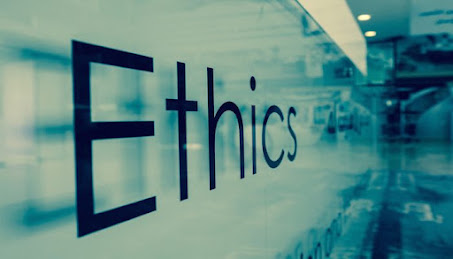Well, the final decennial map for the Pomona city council districts has been completed. We now know how the city will be split among the 6 council districts.
The new districts are likely to have impacts on the representation over the next 10 years. Some potential candidates might find themselves running in areas that they wouldn't have anticipated. Some will run in districts that look similar to what they looked like for the past 30 years. The final map will not appeal to everyone, but I congratulate the commission on coming up with a map that gives equal representation throughout the city without marginalizing any single group, nor giving extra representation to any special group.
So Let's Take a Look at The Maps
Here is the map showing the current (pre-redistricting) districts and how they lay out.
Here is the new, final district map which will be in effect prior to the November 2022 election.
You can immediately see that districts 5, 1 and 6 are significantly changed, while 2, 3, and 4 are changed but have a much more traditional feel. This is how the commission dealt with the fact that current D6 was 17% over populated and D5 was almost 23% under populated. In order to make D5 larger and D6 smaller, D1 in the middle had to grow to the north and shrink to the west and south.
How will this impact the city's political climate moving forward?
Below are my opinions, based on my view of the current situation and how these changes will impact it. Again, these are my opinions and I'm sure that others will have differing ideas.
District 1: Current Councilperson, John Nolte, next election, November 2024 (possible primary in March 2024*)
The potential for a major change in the focus for this district is fairly great. While it was originally a middle of the city from Garey to the western border district that included Cal-Poly, it now is the "Ganesha Hills" district and includes Fairplex, Ganesha Hills, Mountain Meadows and neighborhoods north of the 10 Freeway. The district goes from 81% Hispanic to 76%. The African American population there goes from 5% to 6%, The white population here goes from 6% to 10%.
Interestingly, household income will go from over 52% in the $50k and above brackets to 55% in those top brackets. Also it will increase from slightly lower than 50/50 renters to owners to a full 50/50 split.
Politically, current councilman Nolte will probably face some opposition from the well-moneyed area of the hills. Candidates from the old D6 from that area have included former councilwoman Debra Martin, Ron Vander Molen, Miranda Sheffield, and Eunice Russell, among others in recent years. If the voters pass the charter amendment to create primaries, there should be a robust number of candidates vying for this seat in March 2024. The current councilman will do well to reach out to the new residents of his district over the next 2 years. This also means that D6 councilperson Robert Torres will no longer represent the higher income areas of Ganesha Hills, and Mountain Meadows, nor will he represent the Fairplex, whose supporters and detractors mostly will be in D1. D1 also adds the Hacienda Historic District to its current Wilton Heights Historic District.
District 2: Current Councilperson, Victor Preciado, next election, November 2022 (this year)
D2 has been changed mostly along its northern and eastern edges. It has been changed to now include all of the area of downtown, which for decades has been split between 4 council districts. In the past the argument was made that the downtown (development) was too important to give to one councilmember. However, this meant that there was not a unified voice for the actual residents of the area. Early in the redistricting process, the downtown core was identified as a "community of interest," meaning that efforts should be made to allow them to elect a common voice for their area. This map accomplishes that goal.
This district has not changed a whole lot as far as population (there is a lot of business property in this district). It goes from 81% Hispanic to 80% Hispanic. 52% of household income is less than $50k. 62% of residents in D2 are renters.
Politically, this district is having an election this year in November. While there are almost always opposition candidates in this area, councilmember Preciado will find himself with a district where he is well-known. He will need to solidify his vision for downtown if he wishes to continue as the sole downtown councilperson.
District 3: Current Councilperson, Nora Garcia, next election, November 2022 (this year)
D3 is probably the least impacted by redistricting this year. The only changes are adding a small sliver north of the railroad tracks from D4 an squaring off its western border, adding a few blocks from D2.
The demographics of this district have not changed much. It looks pretty much the same as it did for the years that it was represented by councilmember Cristina Carrizosa. Councilmember Garcia should have an easier time with it as it will only include a very few new voters to the district.
District 4: Current Councilperson, Elizabeth Ontiveros-Cole, next election, November 2024 (possible primary in March 2024*)
D4 will see some moderate changes, maintaining its east, north, and western boundaries but losing some population in the south. D4 will lose its small portion of the downtown and some of Holt Avenue west of Towne. The Lincoln Park Historic District will remain completely in D4.

The demographics are almost completely unchanged. The only real major issue for the current councilperson may be the loss of the western end of the Holt corridor, originally D1, which will now be shared by D1, 2, & 5. Since Holt is mainly business and has few voting residents, its importance is mostly in how future councilmembers may view the development of the major corridor in their districts. Again, politically, with little change (exclusively loss of area) this district should not be a target for shifting population politics.
District 5: Current Councilperson, Steve Lustro, next election, November 2022 (this year)
D5 is the district which has been the recipient of the largest population shift as a result of this year's census. The census showed that it was underpopulated by about 22+%. This means that the commission had to add a large number of population to D5 in order to equalize the population among the 6 districts.
The current D5 has much of its western boundary east of the 57 Freeway, skirting Cal Poly. The new D5 will include all of Cal Poly and move the district to the western border of the city including a small area along the 10 freeway even crossing over for a few neighborhoods. The southern portions of the district remain intact. While still not ideal population, it is now only short by under 1%
The demographic shifts here are the most severe in the city. The Hispanic population of D5 goes from the current 46% (currently the only district in the city with less than 50% Hispanic) to 53%. However, if you count voting age population, it is still below 50% at 44%. D5 currently has the largest Asian population at 28%, which now drops to 23%, while still maintaining its rank of the highest. The education level has decreased somewhat going from 25% with a BA to 22%. D5 has the highest level of home ownership with 71% and only 29% renters. This is also the wealthiest district (by average incomes) with 53% of the population having a household income of more than $75k.
Politically, this district will see many new voters and the potential for candidates from different sectors. While this district has traditionally been the "Phillips Ranch" district, it now encompasses a much wider demographic. With its income levels, fundraising should not be an issue. While it still has the lowest Hispanic population among the 6 districts, they still maintain a wide plurality. However, this is also the largest Asian population and might encourage an Asian-American candidate to form alliances for a successful run. With the addition of the Cal Poly campus and the surrounding housing, candidates will need to shift focus from Phillips Ranch to other types of populations.
District 6: Current Councilperson, Robert Torres, next election, November 2024 (possible primary in March 2024*)
D6 had a major shift in population as well. With excess population of almost 18%, the commission had to find a way to reduce the population of the district. As mentioned, most of that was moved to D1 including all of Mountain Meadows, Ganesha Hills, and Fairplex, all at the western end of the current district. D6 still maintains the Yorba area across White from the Fairplex as well as Pomona Valley Hospital. The southern boundary remains at the 10 Freeway from Garey to the eastern city limit.

As for the demographics, the district goes from being nearly 18% overpopulated to being a little more than 2% underpopulated. However, the population figures don't take into account the large Gabriel development at Bonita and Harrison with its 312 units probably adding over 600 to the D6 population within the next few months. Income levels remain fairly consistent with the current D6 with 51% of the households in the district making over $75k.
Politically, this area will no longer be the Ganesha Hills district so we can look toward future candidates who are not as likely to have been as active in civic matters. Robert Torres should be able to solidify his support without the politically active and often well financed residents of Ganesha Hills. It will be interesting to see where future candidates come from. Will it be the somewhat active residents of the Yorba area or the residents who are often described as "Claremont adjacent" from the far north. Regardless it will likely be a major shift.
Conclusions
November will find many Pomona residents voting this year who were probably not expecting to have a city election until next year. Those who live in D1 that have been moved to D5 will face this issue. This will impact voters west of the 57 freeway and north of the 71 especially along the city's western limit. Additionally voters who were in D4 south of Holt and east of White will suddenly find themselves in D1 whose election is this year. In 2024, many will see different candidates than they might have expected, especially in D6 and D1.
Next time, I'm planning on writing about the redistricting process this year. Things we've learned, things we can improve and how to make the process better with an eye to both IF the charter amendment passes creating a permanent redistricting commission or if it fails, what the next steps by a future council might be.
* IF the charter amendment on the November 2022 ballot is approved by the voters, then there will be a primary election in 2024, if not, then the election will be in November.
 For transparency, I personally have submitted an application for a position on the commission. So if I'm appointed, these are certainly what I will be striving for, if not, I'll probably be there to, as a citizen, "assist" the commission in understanding the thoughts of the Charter Review Commission who put this forward.
For transparency, I personally have submitted an application for a position on the commission. So if I'm appointed, these are certainly what I will be striving for, if not, I'll probably be there to, as a citizen, "assist" the commission in understanding the thoughts of the Charter Review Commission who put this forward.















